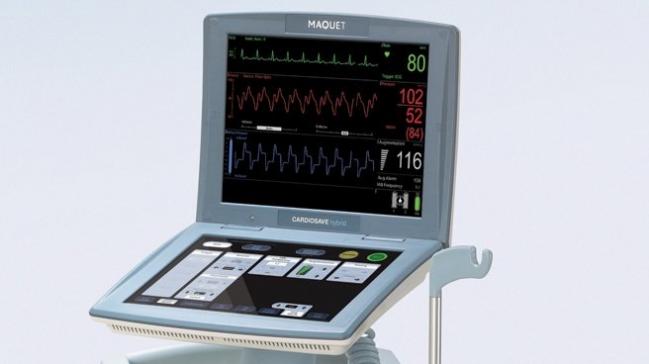FDA: Class I Recall for Cardiosave Hybrid IABP Due to ‘Fluid Ingress’
One death has been reported, according to the manufacturer, which has designed a protective top cover for the IABPs to correct the issue.

The US Food and Drug Administration (FDA) has alerted users of Datascope Corp/MAQUET’s Cardiosave hybrid intra-aortic balloon pump (IABP) to a “design issue” that enables fluids to leak into the device, classifying a recent field corrective action by the company as a Class I recall.
“The fluid can cause corrosion of internal components such as the electronic circuit boards, and lead to device malfunction (eg, sudden stops) which can cause a delay or interruption in therapy. Device failure may result in immediate and serious adverse health consequences, including death,” the FDA announced yesterday.
Datascope Corp/MAQUET, part of the Getinge Group, outlined next steps via an Urgent Medical Device Correction letter released on May 4, 2018. The company says it “has received complaints involving the Cardiosave IABPs regarding ingress of fluids into the IABP affecting various electronic circuit boards,” including “one report of an adverse event in which one death was associated with a saline spill/liquid ingress.”
In response, Datascope Corp/MAQUET “has created a protective top cover for the Cardiosave IABP that addresses this potential ingress issue,” expected to be available by late June 2018, the letter states. Affected customers will be contacted by the company for on-site service.
The recall applies to all lots of the IABP that were distributed from March 6, 2012, through April 26, 2018. A total of 2,826 units nationwide are affected, the FDA says.
According to the agency, Datascope Corp/MAQUET is instructing Cardiosave users to:
- Never place fluids on top of the unit
- Ensure that the saline container and tubing do not hang directly over the IABP
- In case of accidental spillage, to wipe clean immediately and have the unit serviced to ensure no hazard exists
In case of an interruption in IABP therapy, patients should be transferred to an alternative IABP. If no alternative is available, the next step is to manually inflate the Cardiosave device with air or helium and immediately aspirate. Repeat every 5 minutes until either an alternate IABP is available or, if this cannot happen within a reasonable amount of time, remove the intra-aortic balloon catheter from the patient.
Last September, three other IABP models made by Datascope Corp/MAQUET—the CS100i, CS100, and CS300—also were subject to a recall, that time due to the potential for false blood detection alarm and fluid ingression. Earlier in 2017, as reported by TCTMD, the company issued a recall for certain lots the same models over the potential for electrical test failure, which the FDA subsequently updated to a Class I.
Photo Credit: MAQUET.
Caitlin E. Cox is News Editor of TCTMD and Associate Director, Editorial Content at the Cardiovascular Research Foundation. She produces the…
Read Full BioSources
Food and Drug Administration. Cardiosave hybrid Intra-aortic balloon pump by MAQUET Datascope Corp.: Class I recall - due to fluid Ingress that may affect device operation and interrupt or delay therapy. Published on: June 6, 2018. Accessed on: June 7, 2018.


Comments